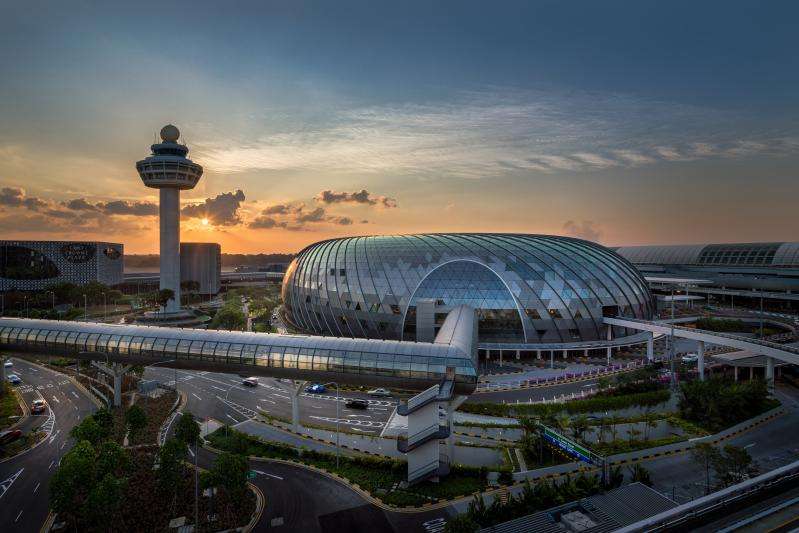In the pursuit of sustainable aviation solutions, the Singapore Hydrogen Cooperation Committee has emerged as a key regional entity, spearheading efforts to explore the integration of hydrogen fuel into the state’s aviation sector.
This collaborative initiative is driven by prominent stakeholders including Airbus, Changi Airport Group, Civil Aviation Authority of Singapore (CAAS) and Linde, denoting a significant stride towards decarbonising aviation operations in the region.
Formation of the Committee
Formed subsequent to the signing of a Cooperation Agreement in February 2022, the Singapore Hydrogen Cooperation Committee embarks on a mission to evaluate the viability and potential of hydrogen fuel within the aviation landscape.
With a collective vision aimed at fostering sustainability and innovation, the committee diligently scrutinises various facets including market demand, supply chain dynamics, and infrastructure prerequisites.
Potential of Hydrogen Fuel in Aviation
The burgeoning interest surrounding hydrogen investment within the Asia-Pacific region underscores its promising trajectory as a sustainable energy source.
Airbus’ Chief Technology Officer, Sabine Klauke, emphasizes the complementarity of hydrogen with sustainable aviation fuel, accentuating its role in facilitating a transition towards net-zero emissions by 2050.
This confluence of interests underscores a collective commitment towards leveraging hydrogen as a long-term decarbonisation pathway.
[monsterinsights_popular_posts_inline]

Central to the committee’s agenda is the exploration of liquid hydrogen technology for powering future generations of commercial aircraft.
While currently under development, the early technical feasibility study conducted by the committee serves as a proactive measure to ensure Singapore’s preparedness for the eventual integration of liquid hydrogen into its aviation decarbonisation strategy.

Infrastructure Requirements
The committee’s foresight extends to identifying infrastructure scenarios conducive to the progressive deployment of liquid hydrogen at Changi Airport.
Projections indicate a substantial demand for liquid hydrogen, with anticipated consumption figures rising steadily beyond 2050.
These scenarios, predicated on the advent of hydrogen-powered aircraft with varying capacities and operational ranges, underscore the imperative of robust infrastructure development.
]

Considerations for Hydrogen-Powered Flights
While the prospect of extended operational ranges presents a myriad of opportunities for intercontinental connectivity, the committee underscores the importance of assessing ancillary factors.
Beyond range considerations, the readiness levels of destination airports and commercial imperatives wield significant influence in realizing the full potential of hydrogen-powered flights within the Asia-Pacific region.
Long-term Goals and Aspirations
Aligned with the International Civil Aviation Organization’s (ICAO) aspirational goal of achieving net-zero carbon emissions by 2050, CAAS assumes a pivotal role in steering national planning efforts towards hydrogen adoption.
By disseminating key findings and monitoring technological advancements, CAAS endeavors to orchestrate a seamless transition towards sustainable aviation practices.
Acknowledging the nascent nature of hydrogen technology, stakeholders advocate for a phased approach towards adoption.
Ms. Poh Li San of Changi Airport Group underscores the importance of meticulous examination across operational, safety, regulatory, and economic domains, advocating for a holistic understanding of hydrogen’s potential ramifications.
“As the aviation industry progresses on its sustainability journey, it is prudent to take a phased approach as air hubs study how best to support the use of hydrogen by aircraft,” she observed.
Linde’s Perspective on Hydrogen in Aviation
Drawing upon a rich legacy spanning over a century, Linde brings to the fore its expertise in navigating the intricacies of the hydrogen value chain.
“In aviation, hydrogen shows promise on two fronts: reducing aircraft emissions in the air, and decarbonising airside ground activities,” said John Panikar, EVP and CEO APAC, Linde.
With a steadfast commitment to innovation, Linde assumes a proactive stance in driving advancements within the aviation sector, thereby accentuating the transformative potential of hydrogen as a clean energy vector.
Conclusion
As the aviation landscape evolves, continuous monitoring of key signposts assumes paramount importance.
From technological milestones to regulatory frameworks, the committee maintains a close watch, and is poised to adapt and capitalize on emerging opportunities in the realm of hydrogen-powered aviation.

Click the banner to subscribe to our weekly newsleter.

Click the photo to join our WhatsApp channel so then you can stay up to date with everything going on in the aviation industry!









